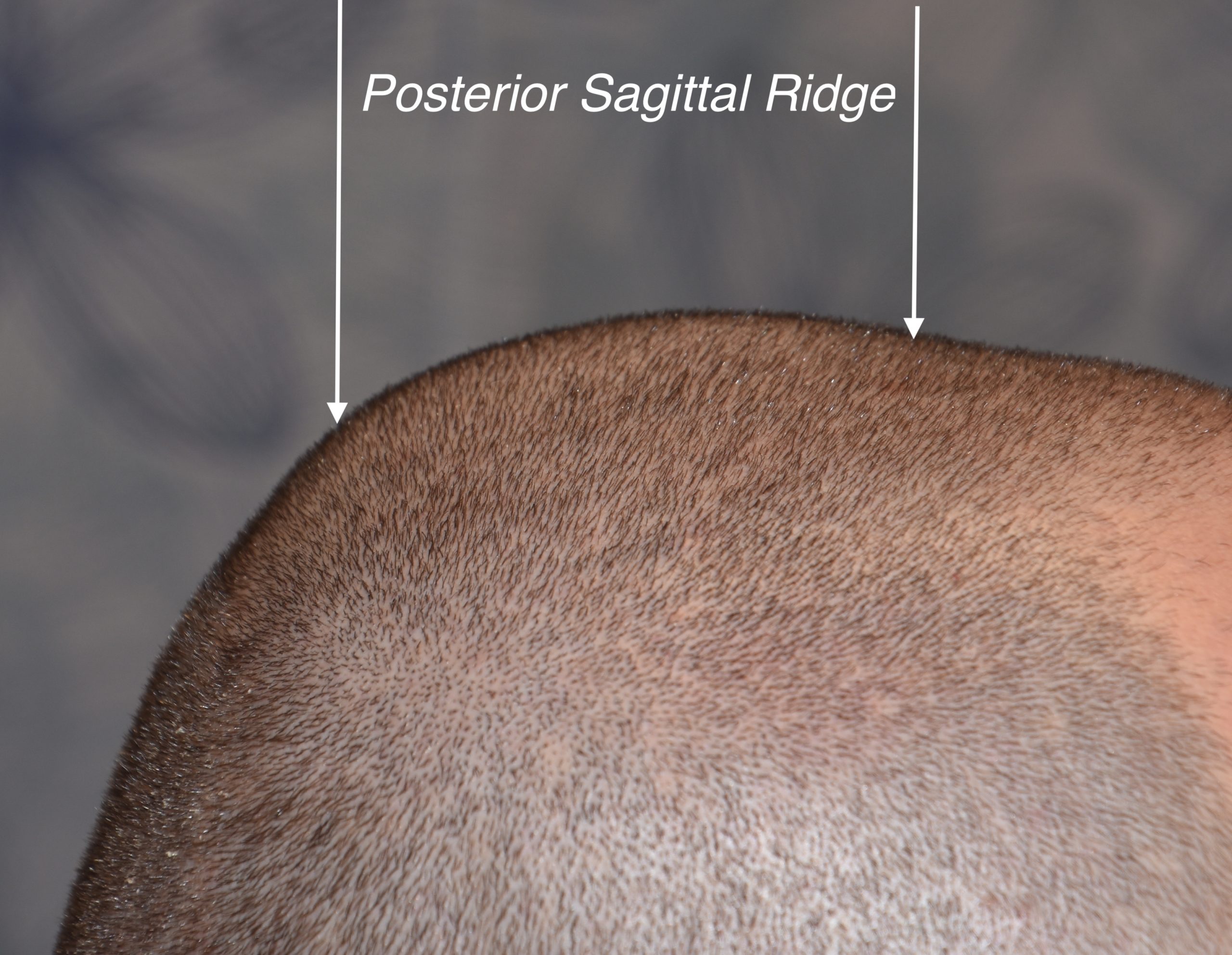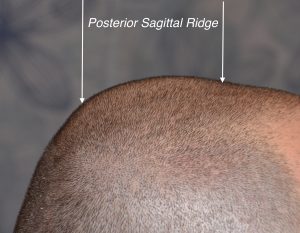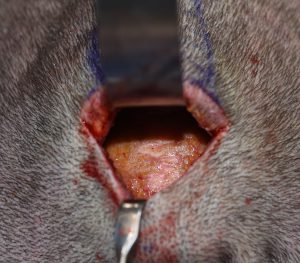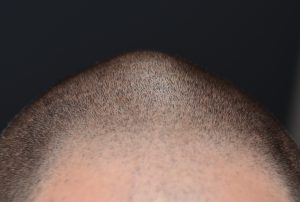
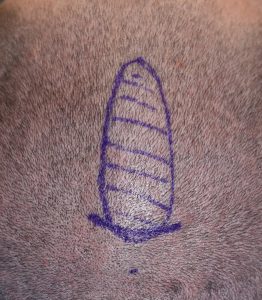
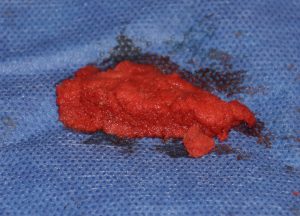
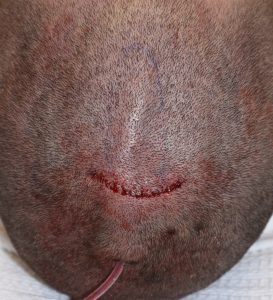
The posterior sagittal ridge skull deformity can be effectively reduced through a very small scalp incision which goes on to heal conspicuously. The key steps are a limited scalp incision, high speed bone shaving and the use of a postoperative drain.
Dr. Barry Eppley
Indianapolis, Indiana

